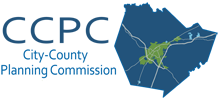Our western world is made up of approximately 23% Baby Boomers and 20% Millennials, where the population of Millennials are projected to surpass Boomers in 2019. Both generations are pushing the limits for creative, innovative, and community-driven spaces, yet have different needs and desires for doing so. Some may argue it’s a forward-thinking approach, but perhaps it borrows from shared spaces of days gone by.
The mixed-use development approach isn’t a new idea, but rather points back to decades ago where urbanized areas offered the amenities people needed within a short distance. Before the era of laptops, video games, televisions, tablets or smart phones, communities interacted in shared spaces like parks, malls, grocery stores, bars, or restaurants.
As many household necessities from food to healthcare products are made available through online deliveries, people (Boomers and Millennials included) find less need to shop and interact within the community. However, as both generations continue to grow older and technology continues to advance, they desire more shared, accessible spaces, often found in mixed-use developments. The biggest driver isn’t so much that people need the amenities offered by the office spaces, grocery stores, or commercial businesses, but as one article states: “Perhaps the strongest driver of mixed-use developments, is the emotional and social element. People want to live in a walkable, mixed-use neighborhood for the sense of community. A mixed-use development brings social value.”
